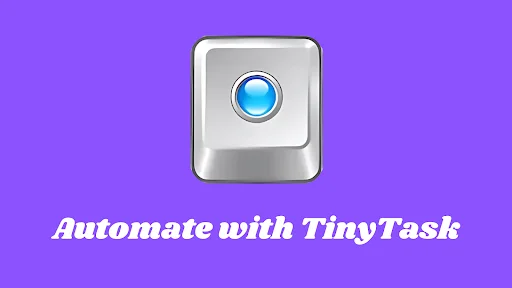In today’s data-driven business landscape, cloud computing has become an invaluable tool for enterprises. This dynamic environment facilitates scalability, agility, and cost-effective operations. However, with the growth and dependence on cloud solutions, the challenge to maintain robust security standards has magnified. In a terrain where cyber threats are evolving rapidly, modern enterprises are expected to have an all-encompassing cloud security strategy. This article delves into the essential tools and techniques businesses can leverage to fortify their cloud infrastructure, emphasizing the CASB solution.
- Understanding the Threat Landscape
To begin with, businesses must understand the vulnerabilities inherent in cloud services. The list of potential threats is vast, from data breaches to denial-of-service attacks. Recognizing these vulnerabilities forms the basis for establishing a robust defense mechanism.
- CASB Solutions – Bridging the Security Gap
One of the most transformative solutions in the cloud security spectrum is the Cloud Access Security Broker (CASB). A CASB solution acts as a gatekeeper, permitting organizations to extend their security policies beyond their local infrastructure to the cloud environment. It offers:
– Visibility: CASBs provide deep insights into cloud service usage, enabling businesses to detect unauthorized access and potential threats.
– Data Security: By implementing encryption, tokenization, and other security measures, CASBs ensure that sensitive information remains inaccessible to unauthorized users.
– Compliance Management: Modern enterprises must adhere to stringent data privacy regulations. CASBs assist in compliance monitoring, ensuring data is handled according to set standards.
- Multi-Factor Authentication (MFA)
It’s no longer enough to rely on passwords alone. Multi-factor authentication offers an additional layer of security by requiring two or more verification processes. By combining something the user knows (password) with something they have (smartphone app or hardware token) or something inherent to them (fingerprint), the chances of unauthorized access are significantly reduced.
- Encryption Techniques
Ensuring data is encrypted in transit and at rest is a cornerstone of cloud security. Advanced encryption methods ensure that even if data is intercepted, it remains unreadable to unauthorized entities. Employing end-to-end encryption, where only the communicating users can decrypt the data, further boosts the security landscape.
- Regular Security Audits
Scheduled security audits can be an invaluable tool. These audits comprehensively review an organization’s adherence to regulatory guidelines. Regular assessments can detect potential vulnerabilities and ensure that all security protocols are up-to-date.
- Employee Training and Awareness
Human error remains one of the leading causes of security breaches. Regular training sessions can equip employees to identify and avoid potential threats. Whether it’s avoiding phishing attempts or understanding the importance of routine software updates, informed employees can play a critical role in cloud security.
- API Integrations
Application Programming Interfaces (APIs) are the building blocks of cloud services, allowing software applications to communicate with each other. Secure APIs ensure data protection while transferring and accessing data. Using safe and verified APIs and providing regular patching and updates is essential.
- Backup Solutions
While defending against cyber threats is paramount, having a robust backup solution ensures business continuity in the face of data loss. Regularly scheduled backups, combined with periodic testing of the backup processes, can protect against data loss and provide peace of mind.
- Endpoint Security Management
Endpoint security has become paramount with the rise of remote working and the use of personal devices for corporate tasks. Every device that connects to the enterprise cloud is a potential entry point for cyber threats. Endpoint security tools provide centralized management to monitor and secure every endpoint accessing the network. They can identify and manage user devices, detect real-time threats, and enforce security policies across all devices. This ensures the data remains secure and inaccessible to malicious entities, even if a device is lost or stolen.
- Zero Trust Network Access (ZTNA)
The traditional “trust but verify” approach is no longer sufficient in today’s complex cyber landscape. The Zero Trust model operates on the principle of “never trust, always verify.” Essentially, no user or system, whether inside or outside the organization’s perimeter, is inherently trusted. ZTNA solutions ensure that users have access only to the resources they require, based on strict identity verification and policy enforcement. By segmenting access, enterprises can minimize the attack surface and reduce the potential damage from breaches.
Conclusion
The journey towards mastering cloud security is ongoing, with threats constantly evolving. Modern tools, like the CASB solution, offer enterprises a chance to stay ahead of potential vulnerabilities. However, a holistic approach that combines technology with regular training and best practices is imperative. By integrating these tools and techniques, modern enterprises can navigate the cloud confidently, harnessing its power while ensuring their data remains protected.

Stand Out This Canada Day with Smart Print Marketing

What Documents Are Needed for a Vehicle Loan Approval?

The Dropshipping Business In 2025 And Its Current Trends

AI in Marketing Is No Longer a Buzzword — It’s the Strategy

Srinivasa Rao Challa Champions AI-Powered Financial Systems for a Smarter, Safer Economy

Buying a Car from a Kia Dealership in Brisbane? Avoid These Costly Mistakes

The Importance of Precision in Modern Metal Fabrication










